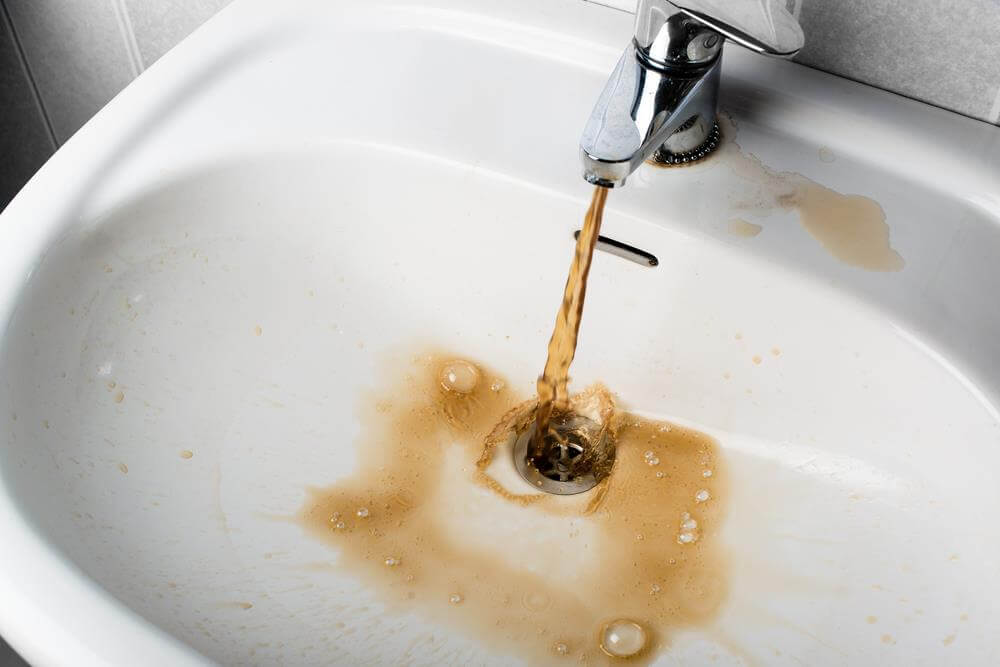Is There Too Much Iron in Your Tap Water?

Iron in your tap water is an incredibly common struggle for people whose homes are supplied with well water. Ideally, well water is cool and clean, filtered by layers and layers of rock and sediment before pooling in the clear reservoir your pump pulls it from. However, if there’s iron in your soil or rusting pipes along your plumbing, iron could be creeping directly into your water supply, significantly reducing your quality of life and causing damage to everything it touches. If you’ve never struggled with an abundance of iron in your taps before, you may be thinking that iron in the water sounds like a quick and easy way to get your daily supplement. Unfortunately, by the time it’s detectable, you’ve got way too much.
That Distinctive Red Stain
The first sign of iron in your tap water, even if the water appears mostly clear when poured, is a distinctive stain anywhere water flows regularly. This is because water causes iron to oxidize, forming an unmistakable rust color. The toilet is usually the greatest victim of iron in your water because it flows and settles along the same lines over and over, day after day. If there are red, yellow, or brown stains in streaks where the water fills in around the sides and in a ring at the level it stops in the bowl, you’ve got too much iron building up in your water and that toilet may never be the same again. Of course, rust stains can also appear on your bathtub (the second greatest victim), the sinks, and even on your laundry, especially if you use chlorine bleach.
Clogging Pipes
Pure, clean water flows through pipes without a problem, but iron particles are heavy and separate. When they hit the edge of a pipe on the way down, there’s a good chance that the iron particles will stick, then the next flow will stick to that and so on until your pipes are effectively much narrower and eventually clog up completely. If your home is experiencing increasing low-flow symptoms, iron may well be the culprit.
Food and Beverages
If you think rust stains look nasty, try cooking with water that has too much iron in it. First, you’ll notice that it had a distinctly ominous red tinge to what should be a clear glass of water. This red is accompanied by an unpleasantly harsh metallic taste that carries into every food you cook and beverage you brew or mix with it. Vegetables react particularly badly, darkening and absorbing the taste and good luck making a tasty cup of coffee or tea with iron-filled water.
What To Do About All the Iron
If you’ve been going through this article like a checklist and checking ‘yes’ to all or most of the items, then your home tap water definitely has an iron problem. Whether this is from iron in the soil seeping into your well or iron from your pipes getting picked up along the way, there are several ways to filter the iron out. The first is water softening, which can be done either per-fixture with softeners built into the faucets or with a larger whole-home unit so that every tap runs clear iron (and hard mineral) free water. Alternatives include greensand filters and chlorine filtration, though we don’t recommend anything that adds chlorine to your tap water.
If you’re having trouble with iron stains or if a home softening unit has not solved iron coming from at least one of your taps, there may be an issue with one or more rusting pipes inside the home itself. For an inspection or help finding the right solution for your home plumbing, contact us today!




